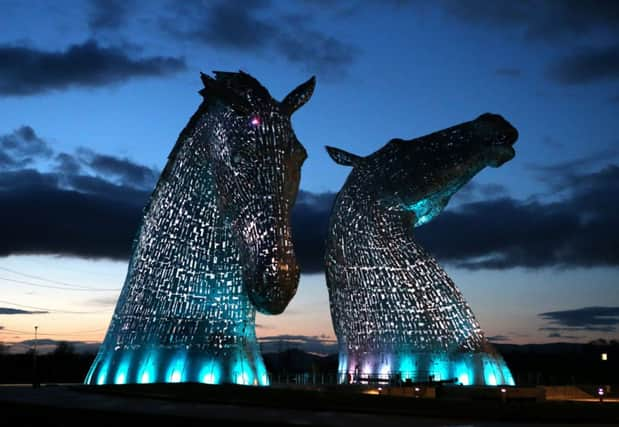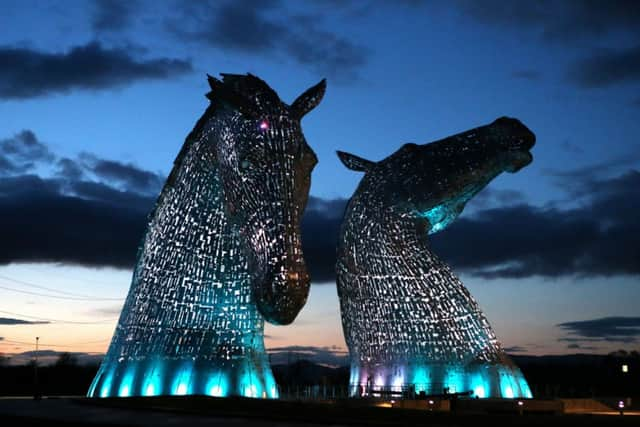Video: Timelapse of The Kelpies statues


Walid, a lecturer at Queen Margaret University in Musselburgh, has produced a timelapse/stop motion film documenting the construction of The Kelpies. The new film features the 75-day construction of the two 30-metre high steel-plated sculptures of horses’ heads which now form a dramatic gateway to Helix Park.
Contracted by the Helix to produce the film, Walid is the only film-maker to have had access to the complete build phase of the momentous Kelpies structures – thereby visually documenting a period in Scotland’s history.
Advertisement
Hide AdAdvertisement
Hide AdIt is hoped that his unique portrayal of The Kelpies will capture the attention of a global audience putting Falkirk on the international tourist map.


Walid and his technical support partner, Bill Annua, spent months on the construction site using a unique combination of hand-held, slides, tracks and static cameras to capture the build. 1000 hours of filming and editing went into creating the final seven minute film.
‘A painstaking, complicated process’
Using a hyperlapse technique, Walid’s film features footage captured within a live construction site. Created from over 60 days of stop-motion filming the video uses over 12,000 individual photos, whittled down from a staggering 120,000.
Walid explained: “Shooting stop-motion/time-lapse photography involves taking actual photos to create the illusion of movement, rather than using film or video. It’s a painstaking, complicated process with a very low success rate, in that much of the footage is discarded.
“The Kelpies are built in a very unique way. There are no text books to refer to for shooting in this environment and we therefore had to develop and apply a totally new filming technique.”
In a bid to describe the work gone into the project, Walid added: “One tiny clip - for example – the adding of the horse’s jaw – could take up to eight hours to film.”
While no special effects have been added, Walhid explained how complex the film set-up was: “We wanted the final result to be as genuine as possible to demonstrate the true reflective nature of the mental structures,” he said.
“95 per cent of the camera movement was achieved by re-positioning the camera on a tripod manually – inch by inch and foot by foot.”
Advertisement
Hide AdAdvertisement
Hide AdHe finished off by expressing his wish that the film might encourage visitors from across the globe to visit the sculpture: “I was privileged to have unlimited access to these magnificent monuments,” he enthused.
“I’ve spent many amazing hours during the daytime and in the dead of night trying to capture their changing qualities. Filming it has been the most difficult but most rewarding experience of my life.
“I hope that the film will now encourage other photographers, filmmakers and visitors from all over the world to experience the brilliance of the Kelpies.”
Construction work on The Kelpies began in June 2013. Each Kelpie weighs 300 tonnes and contains 3,000 metres of steel tubing and 17,000 component parts. They were put together using 3D modelling software.
Councillor Adrian Mahoney, Falkirk Council’s spokesperson for Culture, Leisure and Tourism, added: “The Kelpies have already attracted international attention and put the whole Helix project on the worldwide map. This terrific new film by Walid Salhab brings a dramatic new dimension to the project and will play an important role in promoting both The Kelpies and the Helix at home and abroad.”
• The Kelpies, completed last year, are a monument to horse powered heritage across Central Scotland. The impressive structures, designed by Scottish artist Andy Scott, form the public art centrepiece of the £25 million Helix Project between Falkirk and Grangemouth. They will open to the public on April 21st, after their official launch as part of the John Muir Festival on April 17th and 18th.
SEE ALSO